Instruction
A modified “Stack and Tilt” swing that encourages upward hit with driver
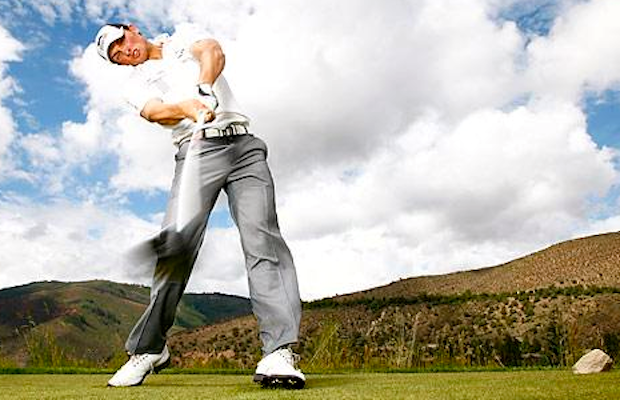
New and innovative swing models are always fun for me as a golf instructor, because they’re good for golf and push us as golf teachers to become better. Out of the box ideas and their fundamentals make us all stop and ponder the question — is this better than how I’m currently swinging? Some players who commit to restructuring their swing philosophy have changed and improved, while others are never heard from again.
A few years ago, Andy Plummer and Mike Bennett began to teach the popular swing theory that was influenced by Mac O’Grady called “Stack and Tilt” (ST). Some say Mac modified what he learned from The Golfing Machine and taught it to Mike and Andy, while others maintain that Mike and Andy created it to some degree. Whatever the source, it was and still is a very interesting and controversial swinging motion.
The biggest knock on ST is that while it’s great for iron play, it does not work so well with the driver since it encourages a steeper Angle of Attack. Personally, I have seen varieties of ST players — some who easily hit up on the ball with their driver, those who chop down too steeply and those forced to modify their mechanics to hit upwards.
NOTE: This article is NOT a knock on ST in any way, just my observations of what one player has done with it. As a teacher I NEVER discount another swing style as incorrect until I completely UNDERSTAND everything about it. As you know, it’s easy to criticize things we do not fully understand, which is dangerous. What I am here to tell you is that unless you can follow every move within a swing model, it will not work unless you make modifications that work for you. This makes us all different even if we were are swinging under the same model.
Making adjustments
Below I’d like to show you the swing of a ST player I know personally. He is a plus-handicap and a great driver of the golf ball, and has used the ST system since college. He’s a very big supporter of its merits. However, he had to make a couple of adjustments in efforts for it to fully work for him with the driver. This is NOT because the model is incorrect or does not work, but the fact that he could not work his pelvis correctly as he added speed with the driver. I’d like to show you the few simple adjustments he made, which allowed him to hit up on the ball with his driver a touch more.
While the changes that HE instituted work for him, they might not work for you — please check with your ST teacher first as I am only showing you what he does, not what everyone should do. I am NOT an accredited ST teacher and these are just my observations.
Here is his address position with his driver, please note three things he has changed a touch:
- His spine at address is a touch more centered not leaning as far left as he does with his irons.
- He has moved the ball forward in his stance.
- The ball is teed up higher.
Now after speaking with him regarding his mechanics, he feels that by placing his spine more centered, with the ball more forward and teed higher, it allows him a touch more “time” for the driver to flatten out and move “up” through the ball.
At the top you can see his hips in the normal “ST” position. while the upper torso is a touch more “behind” the ball due to this player’s modified spinal tilt at the address position. I have drawn a line and a circle to mark where this player is at the top and they will help you to see how he has changed his downswing to work better for him.
During the transition his pelvis does not move as up and forward as the normal ST player would do, which is one of the big reasons why his modified set-up is a necessity. He understands that the transition of the pelvis is the key element within the ST system if you want to hit up on the driver. Some players have this motion naturally while others do not, but his body does not work that way. He has two options — fix the pelvis action, or modify his ST model.
So the key here is that if you cannot master every move within your chosen swing model, you can always work around things a touch so it can work for you. Below you will see how this player uses the ST system so successfully for him and how he gets around a problem area in his transitional sequence, which has proven difficult for him in the past.
The key to his upward hit with the driver is the “standing up” motion he has through impact. Now obviously you would not teach this, but as a better player, this motion along with his set up modifications help him to hit up on the driver, create more speed, increase his smash factor and dump the lag so that he can have the correct dynamic loft at impact in order to hit the ball the correct height.
As he stands up, his shoulder rotation stalls a touch allowing the lag pressure he has created in the downswing to decrease, which begins the release sequence. As he stands up, rotation stalls and the release occurs a touch earlier, thus his loft at impact is 15.1 degrees, which is right on the money. If he didn’t stand up he would carry too much lag into impact (too much handle drag) and his Angle of Attack would be downward, not upward as it is shown here. So by hitting balls and modifying his ST motion a touch, he has learned how to hit the ball successfully despite the transitional nuances he has within in his swing.
So hopefully you have seen that we are not robots, nor can each of us master every move in a chosen swing model. If you can’t make move “X” then it’s up to your teacher, as well as the player, to modify things within the system to work more effectively for the player. It’s a ying and a yang between the player and the teacher — don’t get caught in the middle!
- LIKE73
- LEGIT9
- WOW6
- LOL2
- IDHT2
- FLOP0
- OB0
- SHANK2
Instruction
Clement: Laid-off or perfect fade? Across-the-line or perfect draw?

Some call the image on the left laid off, but if you are hitting a fade, this could be a perfect backswing for it! Same for across the line for a draw! Stop racking your brain with perceived mistakes and simply match backswing to shot shape!
- LIKE0
- LEGIT0
- WOW0
- LOL0
- IDHT0
- FLOP0
- OB0
- SHANK1
Instruction
The Wedge Guy: The easiest-to-learn golf basic

My golf learning began with this simple fact – if you don’t have a fundamentally sound hold on the golf club, it is practically impossible for your body to execute a fundamentally sound golf swing. I’m still a big believer that the golf swing is much easier to execute if you begin with the proper hold on the club.
As you might imagine, I come into contact with hundreds of golfers of all skill levels. And it is very rare to see a good player with a bad hold on the golf club. There are some exceptions, for sure, but they are very few and very far between, and they typically have beat so many balls with their poor grip that they’ve found a way to work around it.
The reality of biophysics is that the body moves only in certain ways – and the particulars of the way you hold the golf club can totally prevent a sound swing motion that allows the club to release properly through the impact zone. The wonderful thing is that anyone can learn how to put a fundamentally sound hold on the golf club, and you can practice it anywhere your hands are not otherwise engaged, like watching TV or just sitting and relaxing.
Whether you prefer an overlap, interlock or full-finger (not baseball!) grip on the club, the same fundamentals apply. Here are the major grip faults I see most often, in the order of the frequency:
Mis-aligned hands
By this I mean that the palms of the two hands are not parallel to each other. Too many golfers have a weak left hand and strong right, or vice versa. The easiest way to learn how to hold the club with your palms aligned properly is to grip a plain wooden ruler or yardstick. It forces the hands to align properly and shows you how that feels. If you grip and re-grip a yardstick several times, then grip a club, you’ll see that the learning curve is almost immediate.
The position of the grip in the upper/left hand
I also observe many golfers who have the butt of the grip too far into the heel pad of the upper hand (the left hand for right-handed players). It’s amazing how much easier it is to release the club through the ball if even 1/4-1/2″ of the butt is beyond the left heel pad. Try this yourself to see what I mean. Swing the club freely with just your left hand and notice the difference in its release from when you hold it at the end of the grip, versus gripping down even a half inch.
To help you really understand how this works, go to the range and hit shots with your five-iron gripped down a full inch to make the club the same length as your seven-iron. You will probably see an amazing shot shape difference, and likely not see as much distance loss as you would expect.
Too much lower (right) hand on the club
It seems like almost all golfers of 8-10 handicap or higher have the club too far into the palm of the lower hand, because that feels “good” if you are trying to control the path of the clubhead to the ball. But the golf swing is not an effort to hit at the ball – it is a swing of the club. The proper hold on the club has the grip underneath the pad at the base of the fingers. This will likely feel “weak” to you — like you cannot control the club like that. EXACTLY. You should not be trying to control the club with your lower/master hand.
Gripping too tightly
Nearly all golfers hold the club too tightly, which tenses up the forearms and prevents a proper release of the club through impact. In order for the club to move back and through properly, you must feel that the club is controlled by the last three fingers of the upper hand, and the middle two fingers of the lower hand. If you engage your thumbs and forefingers in “holding” the club, the result will almost always be a grip that is too tight. Try this for yourself. Hold the club in your upper hand only, and squeeze firmly with just the last three fingers, with the forefinger and thumb off the club entirely. You have good control, but your forearms are not tense. Then begin to squeeze down with your thumb and forefinger and observe the tensing of the entire forearm. This is the way we are made, so the key to preventing tenseness in the arms is to hold the club very lightly with the “pinchers” — the thumbs and forefingers.
So, those are what I believe are the four fundamentals of a good grip. Anyone can learn them in their home or office very quickly. There is no easier way to improve your ball striking consistency and add distance than giving more attention to the way you hold the golf club.
More from the Wedge Guy
- The Wedge Guy: Golf mastery begins with your wedge game
- The Wedge Guy: Why golf is 20 times harder than brain surgery
- The Wedge Guy: Musings on the golf ball rollback
- LIKE88
- LEGIT14
- WOW6
- LOL1
- IDHT0
- FLOP4
- OB1
- SHANK8
Instruction
Clement: Stop ripping off your swing with this drill!

Not the dreaded headcover under the armpit drill! As if your body is defective and can’t function by itself! Have you seen how incredible the human machine is with all the incredible feats of agility all kinds of athletes are accomplishing? You think your body is so defective (the good Lord is laughing his head off at you) that it needs a headcover tucked under the armpit so you can swing like T-Rex?
- LIKE0
- LEGIT3
- WOW2
- LOL0
- IDHT0
- FLOP0
- OB0
- SHANK2
-

 19th Hole2 weeks ago
19th Hole2 weeks agoJustin Thomas on the equipment choice of Scottie Scheffler that he thinks is ‘weird’
-

 19th Hole2 weeks ago
19th Hole2 weeks ago‘Absolutely crazy’ – Major champ lays into Patrick Cantlay over his decision on final hole of RBC Heritage
-

 19th Hole3 weeks ago
19th Hole3 weeks agoTwo star names reportedly blanked Jon Rahm all week at the Masters
-

 19th Hole3 weeks ago
19th Hole3 weeks agoReport: LIV Golf identifies latest star name they hope to sign to breakaway tour
-

 19th Hole3 weeks ago
19th Hole3 weeks agoNeal Shipley presser ends in awkward fashion after reporter claims Tiger handed him note on 8th fairway
-

 19th Hole2 weeks ago
19th Hole2 weeks agoBrandel Chamblee has ‘no doubt’ who started the McIlroy/LIV rumor and why
-

 19th Hole1 week ago
19th Hole1 week agoLET pro gives detailed financial breakdown of first week on tour…and the net result may shock you
-

 Equipment3 weeks ago
Equipment3 weeks agoJason Day on his recent switch into Srixon ZX5 and ZX7 Mk II irons

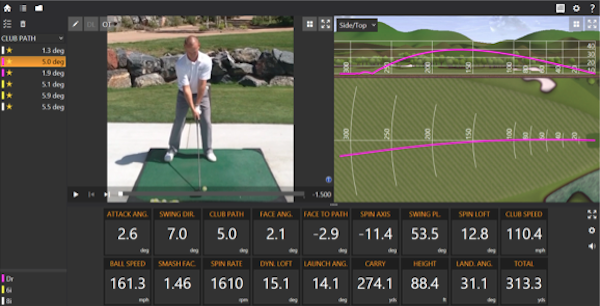

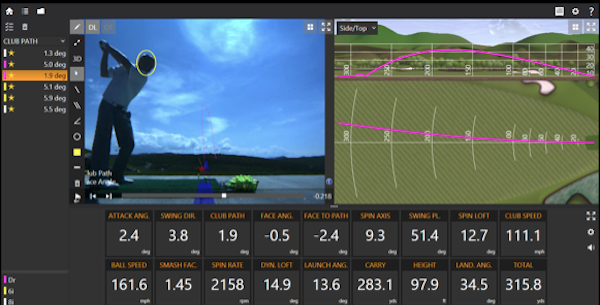
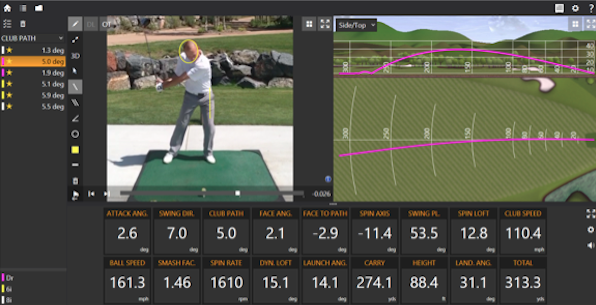
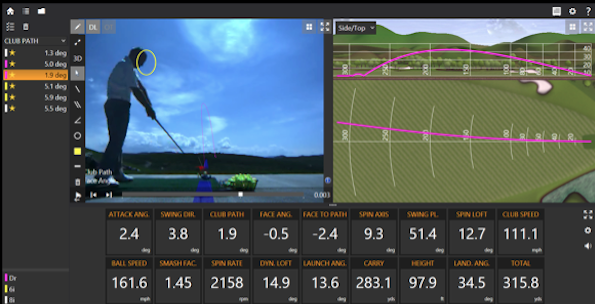
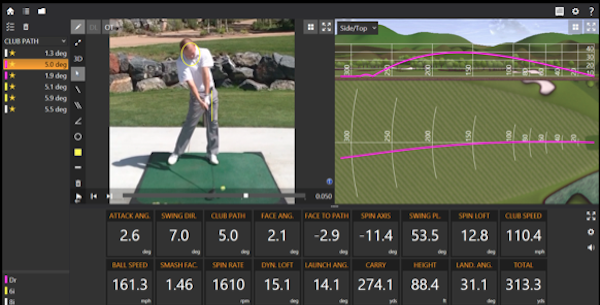

















Troy
Nov 2, 2014 at 1:09 pm
It is mind boggling how much grief this Stack and Tilt generates. Across the Internet there is literally hundreds of thousands of videos, forums, websites and golf schools that promote countless ways to improve swinging a club at a little white ball. Alignment sticks, towels tucked under arms, pvc pipes tied to your waist, Medicus clubs, video recording apps, swing speed devices, laser products, etc are a taste of what is promoted. Lean forward, lean back, tee high, tee low, one plane, two plane, Hogan swing, Tiger swing, head forward, head behind………..GET THE POINT? Then to top it off hundreds of thousands golfers that will NEVER make the PGA Tour denounce various “methods” because guys that DO PLAY ON THE PGA TOUR are not using said “methods”. I personally don’t care what style one uses. If it works FOR YOU and it’s within the rules do it! If it gets you out on the course and you are enjoying YOUR game then go for it. With a national average score of 100 I’d say Stack and Tilt is the least of players problems.
golferjack
Sep 17, 2014 at 4:08 pm
I have read all of the comments and would just ask who thinks Sean Foley is a good teacher? Does he not have ST in his work. To reply to the guys who say you can’t hit a fade with ST, I saw Mike bennett give the best live Demo I have ever seen with all shapes and Clubs and more to the Point saying what he would hit before he did it! At the end of theday we are all trying to become better Players and teachers, I hope, give Mike and Andy the credit they deserve for the work they put in.
golferjack
Sep 17, 2014 at 4:10 pm
PS forgot to say, nice article, like your work a lot Tom.
Tom Stickney II
Sep 17, 2014 at 6:05 pm
Thx sir
Tom Stickney II
Sep 17, 2014 at 6:05 pm
They have worked hard.
Clown
Sep 21, 2014 at 2:05 am
golferjack,
Bennet can hit whatever he wants if he’s simply doing a demonstration to a driving range, if he wants, and make himself look like a clown, for all care. He doesn’t have to hit precision cuts and controlled fades into tucked pins under pressure in a tournament to greens running at an average of 11 or more. That’s the difference.
DM
Sep 22, 2014 at 9:59 pm
Really? I believe Mike tried to Monday qualify on the PGA Tour a couple years ago and shot 65? Just because the guy maybe can’t play as consistent as he wants to, doesn’t mean he can’t play.
golferjack
Sep 23, 2014 at 3:19 am
I agree with your comment, there is of course more to golf than just the swing and we all know that the best teachers aren’t the best Players. His demo however did Show that the swing he teaches works and that it is also useable with the Driver. Mike and Andy both played on lower Level tours and I’m sure that compared to most of us they would still get it around.
Cup80
Sep 16, 2014 at 6:11 am
Tom, excellent article and really appreciate the unbiased (un-dogmatic) way you approached this subject which has seen so many heated discussions that didn’t lead anywhere in the end.
Switching to lefty in 2013 (being natural lefty) my teacher had me set out on an ST swing to which himself migrated after starting out his career in the Golfing Machine. I, myself had dived into GM for a good 10 years and spent hours of discussions on it. Ben Doyle has been a close contact and big influence to our teachers and personally trained our best player while he was in the US.
I found myself very well in this article and how your friend has tackled this challenge, as some said before it’s probably the most intuitive way to adjust the setup like this and has worked very well for me as well.
Again, excellent article in this very sensitive subject, whether one agrees to ST or not, really well done!
Tom Stickney II
Sep 16, 2014 at 9:35 am
Thx. I learned under Ben. All the best.
Sunil
Sep 30, 2014 at 12:14 am
I guess looking at this video again of my swing and the drill , the early resleae of my right hand is due to my hands taking over once again on my down swing. This should answer my own question that I just wrote to you.I just took out an aluminum pole and ran it up from the floor through my hands & touching my left side, it makes it impossible to flip the club on the forward swing. I practiced with it and then hit some balls trying to get the same big muscle feeling I had with the extension pole. Is this Ok to do. Thanks, Jim
No.
Sep 16, 2014 at 3:50 am
If it’s “modified” then it’s not S&T, then, is it? Obviously.
Try hitting a giant fade with S&T. The kind of shot that you aim outside of the rough and bring it back to the other side of the fairway with a massive curve. You can’t. And I know this because I’ve seen S&T guys try. They just can’t do it.
So don’t do it.
Tom Stickney II
Sep 16, 2014 at 9:37 am
Everyone has idiosyncratic motions…this doesn’t mean you abandon the entire system. In the end you must figure out what works best for your game.
Desmond
Sep 16, 2014 at 5:35 pm
It’s not tough to do for S&T — aim club slightly left, have path more closed to face – cut.
Physics
Sep 16, 2014 at 12:40 pm
You realize impact dynamics and physics don’t care if you’re stacking and tilting, right? Just because the ones you know can’t hit a big fade that way doesn’t mean it can’t be done.
If you know how to change face and path you can make the ball curve any way you want with any type of swing.
No
Sep 16, 2014 at 1:58 pm
http://www.golf.com/video/just-say-no-stack-tilt
It’s on GOLF.COM. Ahahaha!
Just say no
Jim H
Sep 22, 2014 at 12:56 pm
i cannot believe they published that video. Im not a S&T guy but i cant believe how just wrong that is.
No
Sep 16, 2014 at 2:06 pm
http://www.youtube.com/watch?v=qZPGuZWJ0vg
Every single one of them hit a draw.
Draw
Draw
Draw
Draw
Draw
Draw
Draw
And you wonder why they can’t drive the ball off the tee or hit a fade. They’ve proven it to themselves.
Tom Stickney II
Sep 16, 2014 at 5:48 pm
Very easy to shift path too far rt when aoa is down.
Desmond
Sep 17, 2014 at 6:02 am
The S&T Stock Shot is a push-draw. From what I’ve heard from pros, they stick to their stock shot most of the time. If they want to cut, they make a change to face and path.
Tom Stickney II
Sep 16, 2014 at 5:47 pm
It’s all face to path…
No
Sep 17, 2014 at 1:09 am
Then show us a S&T hitting a Trevino/Bubba Watson type fade around the corner as a preferred ball flight as opposed to the draw.
Desmond
Sep 17, 2014 at 6:03 am
Buy the S&T vids and see a cut
GolfingInOz
Sep 15, 2014 at 9:08 pm
I had a traditional swing with over-swing issues and ended up just ‘flicking’ at the ball at impact. I wasn’t able to really compress the ball and hit the ball consistently. Over the last 18 months I have adopted a lot of ST into my swing and the improvements have been measurable. Previously with my old swing I would play one round to my handicap of five or six then the next four rounds I would play to 10+, however now I am playing consistently to three or four!! ST has seen me have good percentages for greens and fairways in regulation (yes I am a nerd and I table all my rounds to find where I went wrong).
I don’t understand the hatred/dislike for ST, if it helps a person out and improves their game and makes them want to play more then I am all for it. Honestly, if a new swing mechanic was Happy Gilmore style and people were running up to their ball to hit it and it approved their game then great.
Tom – great article and it just proves that you can adopt aspects of any swing style and be able to improve your game.
Tom Stickney II
Sep 15, 2014 at 9:51 pm
Thx. I’m a huge fan of their work.
J
Sep 15, 2014 at 4:19 pm
Anything has to be better than S&T. Causes serious stress on the lumbar spine. From the swing standpoint, it is horrible for the long game, Hitting down on a modern driver spins like the dickens. Look at what happened to EVERY player from the commercials they used to have on GolfChannel like axley, weir, badds, snedeker. Not one of them was particularly long or accurate with any club in the bag. I never see them in Magazines or interviews anymore so maybe people finally relize, it does not work.
eli yates
Sep 15, 2014 at 6:23 pm
The S&T guys were literally just in… i wanna say golf digest… not even 3 months ago. I dont think you really have any basis for your statement… not picking on you… i just dont think its fair to make negatively biased statements based on nothing… i doubt you even compared before and after stats for the players you mentioned…
Tom Stickney II
Sep 15, 2014 at 7:31 pm
Eli…I believe that comment was for J above?
eli yates
Sep 15, 2014 at 9:53 pm
Absolutely. I liked the article. Obviously the driver would be a struggle for most. I have gone through some swing changes geared toward a stack and tilt/ sean foley style (not intentionally) and with the driver i noticed i was way too steep… so all i did was feel like my upper body was hanging back a little while my lower body stayed moving foward. I maintain my angles and hit the ball on a more level stroke. All i did to achieve it was essentially the flying wedge drill with the driver. I just worked on hitting that and then once i got that engrained it was just a matter of swing through to my finish. Works for me anyway.
Tom Stickney II
Sep 17, 2014 at 8:23 am
All that matters!
Desmond
Sep 15, 2014 at 6:35 pm
One doesn’t generate back problems when doing S&T correctly. There is a lack of so-called coil, and therefore, lack of stress. The right leg straightens and hips turn as much as you want on the backswing. As to the driver, over 4 years ago, they made adjustments to the driver swing – ball more forward, more tilt axis at address, etc. It’s not rocket science. When I did S&T, my AOA was positive. You will notice that when Touring Pros first used S&T, they did well. It was only when they “got it” that they went downhill. Why? Possibilities are that they bought into the pressure on the front foot for the entire swing. Studies have shown that weight pressure does go to the back foot during the backswing, and then forward. So you have a lot of people moving away from B&P and going to a center pivot swing. You see a lot of Touring Pros using elements of S&T, but not as taught by B&P. So B&P have made a great contribution to the golf community, but many believe they need to evolve their teaching.
Tom Stickney II
Sep 15, 2014 at 7:32 pm
Center pivots are the rage currently. Thx. 🙂
Stretch
Sep 15, 2014 at 9:29 pm
Tom, have you looked in on the pivot patterns based on the testing criteria that E A Tischler has come up with?
Tom Stickney II
Sep 15, 2014 at 9:52 pm
Yes…ea is quite the teacher! Us bald guys have to stick together.
No.
Sep 16, 2014 at 3:46 am
“So B&P have made a great contribution to the golf community, but many believe they need to evolve their teaching.”
But they can’t. If they do “evolve” it won’t be S&T, they’ll end up at Snead or Hogan, Trevino or Floyd, and even Norman or Bubba Watson, because there is nowhere for them to go. All you have to do in golf is to hit the ball, no matter how it’s done, and make it move forward as fast and as far as possible, regardless of how the swing is.
I think people would rather swing with a swing that can last a lifetime, not some band-aid swing for the young body like S&T is.
That’s the whole point.
Desmond
Sep 16, 2014 at 5:38 pm
Haters gotta’ hate…
Stats
Sep 17, 2014 at 12:36 pm
The only hater is you, Desmond. You just can’t accept the fact that S&T proved nothing except that it doesn’t work and that you will always end up back to Snead, Hogan, Trevino and on down to Morad or Moe Norman.
Get over yourself, Desmond
Tom Stickney II
Sep 17, 2014 at 8:24 am
Most swing models evolve as teachers learn more…
Jimmy Tudeski
Sep 19, 2014 at 12:59 am
Stack and Tilt is not a band aid. It is simply a system designed to add critical elements to a players swing in a order to achieve the results as quickly as possible. All players stack and tilt, some just have more elements than others and a ball flight preference or bias will change elements used.
Marsella
Sep 29, 2014 at 9:42 pm
If I’m picturing what you are siynag correctly, yes. Ironically, I was working on a blog entry very similar to what you are siynag. In a lesson yesterday, I had my student simulate impact against a pole on the range he then hit wonderful shots because the muscle image was still fresh and he just reproduced it with a drill. This is not finished yet but I think you will get the idea. I will do a video soon.Here is the post draft:Use A Kinesthetic Drill to Map Impact for Recall If you setup in a doorway with the door jamb opposite your front hip socket, then simulate impact by putting the palm of your back hand on the jamb, and turning your core to push against the jamb (rotating like the downswing, not sliding forward), you will push on the jamb and actually program or map this feeling in your brain, Kinesthetically. So why would you want this? Well, it is teaching the muscles the feeling of what you want to achieve through impact. It is kind of like recording a mental picture of all of your muscles (turning and pushing), that you will recall just before you swing. Then once you’re setup, recall the feeling of the drill then go. The visualization is so fresh in your mind, your body will reproduce it.
Tom Stickney II
Sep 15, 2014 at 7:29 pm
Mike and Andy have made some adjustments from what I understand as with all swing models over time. Still a valid method for some IMO
Tom Stickney II
Sep 16, 2014 at 9:39 am
It’s been modified a touch.
vinax
Sep 15, 2014 at 1:21 pm
I love your articles. This one is very limited in appeal and scope though.
Tom Stickney II
Sep 15, 2014 at 3:42 pm
Thx but I have an obligation to cover all topics to be fair
Desmond
Sep 15, 2014 at 11:23 am
You might try this vid from 4 years ago by Dave Wedzik. Although he no longer works with S&T, this vid was done when he used S&T. It explains hitting the driver from S&T Guys.
https://www.youtube.com/watch?v=JXuikUmHeEQ&feature=youtu.be
Tom Stickney II
Sep 15, 2014 at 3:42 pm
Thx